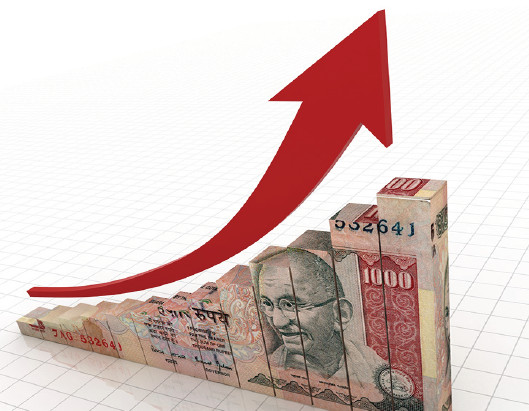




 |
 |
 |
|||
 |
 |
 |
 |
 | |
 |
 |
 | |


| 미디어 브리핑스 | 내서재담기 |


  |
 |  |
인도의 급격한 경제성장을 보자 Indias Coming Economic Surge
21세기 중반의 인도는 젊은 인구와 규모, 그리고 - 다른 개발도상국들에게는 없는 - 선진 국가들과의 호환성(compatibility)이 독특하게 결합된 국가가 될 것이다. 이러한 독특한 경쟁력을 인도는 어떻게 활용할 수 있을까? 앞으로 직면하게 될 문제로는 무엇이 있을까? 다국적 기업과 투자자들의 입장에서는 무엇을 고려해야 할까?
현재 인도는 세계에서 경제 성장이 가장 빠른 국가 중 하나다. 국제통화기금(IMF)에 따르면 2015년 인도의 GDP는 7.5% 성장했고, 2016년에는 7.4% 성장할 것으로 예측되고 있다.
인도가 경쟁 우위를 점하고 있는 것은 다음과 같다.
첫 번째가 인구로 인도는 중국 다음으로 세계에서 가장 많은 인구를 보유하고 있다. CIA의 『World Factbook』은 인도 인구를 12억 7천만 명으로, 미국 인구보다 약 4배 이상 더 크다고 밝히고 있다.
두 번째는 인도의 중산층이다. 맥킨지 글로벌 연구소(MGI, McKinsey Global Institute)에 따르면 2025년까지 인도의 중산층 인구는 8천 7백만 가구로 늘어날 전망이다. 현 인도의 중산층에서 3배 가까이 늘어난 수치다. 앞으로 20년 내에 수억 명의 사람들이 중산 계층이 된다면, 인도의 소비 지출도 급격하게 증가할 것이다.
인도의 향후 경제 부흥에 대한 한 가지 요인은 인구의 이동이다. 인도의 인구는 점점 빠르게 도시로 유입되고 있다. 맥킨지의 자료에 따르면 인도가 약 35% 정도의 도시화에 도달하게 되면 1인당 GDP가 2배 이상으로 급증한다. 사람들이 더 많은 교육과 더 나은 헬스케어, 그리고 더 많은 직업 기회를 가지면서 생산성은 더 높아지고 그로 인한 혜택이 폭발적으로 증가한다. 2030년경이면, 인도 전체로는 도시화율이 35%에 도달하고 몇몇 주들은 50~60% 수준을 이룰 것이다.
다른 한 가지는 인구통계학적 요인이다. 인도는 다른 개발도상국보다 젊고 교육이 더 잘 된 인구를 보유하고 있다. 맥킨지는 인도가 2030년이면 9천만 명의 대학 졸업 학력의 근로자를 보유할 것으로 본다. 인도 경제는 전 세계적인 에너지 가격의 하락에서도 혜택을 볼 것이다. 인도는 석유 소비량의 약 80퍼센트를 수입하기 때문에 산유국들에게 큰 손 고객이다. 원유 가격이 급락하면서 인도 기업들은 고용과 기술에 대한 투자를 늘리는데 필요한 돈을 마련할 수 있었고 인도정부는 연료에 대한 보조금을 줄일 수 있었으며 소비자들은 상품과 서비스를 더 많이 소비할 수 있게 되었다.
또 다른 하나의 요인은 역시 정치다. 모디 수상은 지난 해 26개국의 정상들과 만나서 인도에 대한 투자를 촉구했다. 지금까지 효과가 있었다. TradingEconomics.com에 따르면, 1995년부터 2016년까지 인도에 대한 외국인직접투자액 증가분은 월평균 11억 7,700억 달러였는데, 2016년 7월에는 47억 3,000만 달러가 증가했다.
그리고 규제개선 움직임도 또 하나의 요인이다. 아시아재단이 최근 보고했듯이, 모디 정부는 온라인이나 단일창구를 통한 인가신청을 허용하는 등 관료주의적인 정책을 개선하는 조치들을 실시했다. 작년에 인도는 세계은행의 기업환경지수(Ease of Doing Business Index) 평가에서 4개 나라를 제쳐서 189개국 중에서 130위를 차지했다. 세계경제포럼의 세계경쟁력보고서(Global Competitiveness Report)에서는 더 좋은 평가를 받아서 작년 71위에서 55위로 뛰어 올랐다. 더 중요한 점으로, 인도는 최근에 상품서비스세(GST)를 발효시켰다. BBC에 따르면 인도의 복잡다단한 간접세, 과징금, 조세 등이 하나의 상품서비스세로 대체됨으로써 기대되는 바로는,
번잡한 조세체계를 간단하게 하고
상품이 주 경계를 원활하게 이동하도록 하며
탈루를 줄이고
납세의식을 높이며
세수를 증가시키고
성장률을 높이며
투자를 촉진시키고
인도에서의 투자와 기업 활동을 원활하게 한다
위와 같이 경제성장의 동력을 다 갖추고 있지만, 인도는 훨씬 더 큰 성장을 목표로 하고 있다. MGI는 최근 인도를 세계에 우뚝 서게 할 다섯 가지 중요한 기회를 발표했다.
첫 번째 기회는 인도 전국민의 생활수준을 높이는 것이다. 이 나라의 빈곤율은 1994년과 2002년 사이에 45퍼센트에서 22퍼센트로 하락했다. 그러나 이는 여전히 2억 7천만 명이 빈곤선 이하에서 살고 있음을 뜻한다. 가장 가난한 인도인들의 미래를 개선하고 나면, 그 다음 단계는 국민의 기본적인 수요를 충족시키고 삶의 질을 실질적으로 개선시키는 것이다. MGI는 수용 가능한 최저생활수준(minimum acceptable standard of living) - 식료품, 주거, 마실 물, 보건, 교육 등의 수요를 충족하는 기준으로 - 을 Empowerment Line이라고 부른다. 이 기준에 따르면, 이 나라 인구의 절반 이상, 즉 6억 8천만 명의 국민이 이 선 아래에서 살고 있다.
앞으로 5년간 수억 명의 인구를 이 선 위로 올리기 위해서는, 정부와 민간기업들은 1억 1,500만개의 비농업 일자리를 만들어내야 한다. 인도가 시급하게 인프라를 개선해야 하기 때문에 대부분의 새로운 일자리는 건설 산업에서 나올 것이다. 한편 농업부문은 유사한 다른 나라와 마찬가지로 현재 2퍼센트인 생산성을 5.5퍼센트까지 높여야 한다. 관개시스템 개선에 투자를 늘리는 것도 하나의 방법이다.
두 번째 기회는 인도의 주요 도시들을 MGI가 말하는 "성장 엔진"으로 발전시키는 것이다. 10년 안에, 인도의 69개 도시가 백만 명 이상의 주민을 보유하게 된다. 이 도시들이 지금부터 2025년까지 투자와 일자리 창출을 통해서 인도경제성장의 3/4를 만들어낼 것이다. 2030년에 뭄바이는 2,450억 달러의 소비를 창출하고, 델리, 아메다바드, 하이데라바드, 벵갈루루 등은 각각 800억~1750억 달러 수준의 소비를 창출할 것이다. 이 도시들은 인프라, 소비제 및 서비스 수요로 인해서 인도뿐만 아니라 외국회사들에게도 이윤을 창출하는 시장을 제공하게 될 것이다.
세 번째 도전은 국내시장을 타깃으로 인도에서 물건을 생산하는 것이다. 중국의 공장을 이용해서 상품을 저렴하게 생산하고 미국이나 EU의 소비자에게 물건을 팔았던 외국 회사들과는 달리, 인도의 제조업에 투자하는 회사들은 커지고 있는 인도의 소비자 시장에 집중할 것이다. 인도 정부는 인도 GDP에서 차지하는 비율이 2015년 17퍼센트인 제조업이 2022년에는 22퍼센트로 증가하고 2030년에는 새로운 일자리를 1억 개 만들어 내기를 기대한다.
현재 대부분의 인도 공장들은 작고 생산성이 낮다. 인도 제조업의 84퍼센트는 50인 이하를 고용하고 있고, 분야마다 차이는 있지만, 다른 나라 소규모 제조업 대비 생산성은 25~65퍼센트에 불과하다. 인도정부는 앞에서 언급한 개혁조치들을 통해서 불필요한 행정절차를 줄이는 노력을 하고 있고 Skill India와 같은 프로그램을 통해서 2022년까지 4억 명 이상의 근로자들을 훈련시킬 계획이다. 기업들은 품질과 생산성을 높이기 위해서 인도품질관리위원회의 "무결점무영향" 프로그램과 같은 운동을 채택하고 있다.
네 번째 기회는 디지털 기술을 포괄적으로 발전시키는 것이다. 인도 경제에 가장 큰 영향을 끼칠 기술들로는 모바일 인터넷, 클라우드, 지식노동의 자동화, 디지털 결제시스템, 사물인터넷, 지능형 교통시스템 등이다. MGI는 디지털 기술들이 근로자의 생산성을 높이고, 산업계의 효율을 증진시키며, 교육을 개선하고, 의료에 대한 접근성을 높여서 2025년까지 매년 5,500억 달러에서 1조 달러에 달하는 경제적 가치를 가져다 줄 것이라고 예측했다.
이로 인해서 수백만 명의 인도인들이 더 좋은 급여를 받는 일자리를 얻게 될 것이다. 인도 정보는 브로드밴드를 통해서 모든 가정이 인터넷에 연결되도록 하는 계획을 발표했으며 시골에 사는 인구들이 컴퓨터와 인터넷에 접근할 수 있도록 10만 개의 공공서비스센터를 개설했다.
다섯 번째 기회는 더 많은 여성을 일자리로 불러내는 것이다. MGI의 연구를 보면, 인도 여성은 GDP에 17퍼센트만 기여한다. 중국 여성은 41퍼센트, 남미 여성은 33퍼센트를 기여한다. 또한 인도 여성은 인도 노동인구의 25퍼센트를 차지하는데, 이는 전 세계 평균 40퍼센트와 현격한 차이를 보이고 있다. 인도 여성을 노동인구에 더 참여시키기 위해서는 여성의 역할에 대한 사회적 분위기를 바꿀 필요가 있다.
현재 인도에서 여성은 남성에 비해서 10배나 많은 무급 노동을 하고 있다. 전 세계 평균은 세 배다. 프록터&갬블은 인도시장에서 "Share the Load"라는 광고를 통해서 세탁은 여성의 일이라는 고정관념을 바꾸려는 시도를 하고 있다. 이런 고정관념을 바꾸고 여성들이 노동에 필요한 기술을 갖추게 하기 위해서는 정부의 개입이 필요하다. 예를 들어, 정부가 시행하는 Skill India같은 프로그램이 특별히 여성들을 위한 훈련을 제공할 수 있을 것이다.
인도가 양성평등 문제에서 조금이라도 진전이 있게 되면, MGI는 2025년까지 인도의 GDP가 약 7천억 달러 증가할 것으로 예측한다.
향후를 고려할 때, 우리는 다음과 같은 전망을 제시한다.
첫째, 인도에서 마케팅을 성공하고자 하는 다국적기업들은 인도시장을 단일 소비자시장으로 설정하지 말아야 한다.
인도는 방대한 인구와 큰 지역적 편차를 보이는 나라라서 개인소비 지출에도 다양한 양태가 있다. 인도 소비자들은 대체적으로 다른 나라 소비자들과 다르게 제품을 소비한다고 말할 수 있다. 예를 들어, 그들은 차 한 대에 다른 나라처럼 서너 명이 아닌 여섯, 일곱 식구가 타야할 수도 있다. 그런데 인도의 인구가 워낙 많기 때문에 지역적 차이도 많이 존재한다. 맥킨지 시니어 파트너인 알릭 크쉬르사가르의 말에 따르면, "남부 지방으로 가보면 인구분포가 남유럽과 유사합니다. 소비를 많이 하는 계층이 나이 많은 사람들이라는 것을 알게 되지요. 구매력을 가진 사람들은 대부분 50세에서 70세인데, 여러 가지 개혁조치와 정부지출 덕분입니다. 그런데 북동쪽으로 올라가보면, 18세에서 30세가 대부분입니다" 게다가, 2025년이면 인도에는 각각 백만 명 이상의 주민이 있는 69개의 메가시티가 생겨난다. 이 메가시티들을 잘 연구해서 특정한 상품, 서비스 및 마케팅을 정교하게 준비하면, 인도를 단일한 시장으로 보고 한 개의 전략만으로 접근할 때보다 훨씬 더 좋은 결과를 얻게 될 것이다.
둘째, 인도의 거대한 인프라 수요는 미국 기업들에게 큰 기회를 제공할 것이다.
인도는 도로를 건설하고 국민들의 물, 위생 및 에너지에 대한 접근성을 개선해야 한다. CNN에 의하면, 전기를 공급받지 못하는 인도인이 3억 명에 달한다. 이는 거의 미국 전체 인구에 해당하는 숫자다. 스마트미터와 같은 스마트기술에 대한 수요가 방대할 것이다.
셋째, 인도는 신흥경제국가 중에서 유일하게 디지털시대에 번창할 조건을 갖추고 있다.
인도는 아직 경제가 대부분 농업에 의존하고 있었기 때문에 지난 30년간의 중국처럼 제조업에 대해서 막대한 투자를 할 수가 없었다. 그래서 중국이 농업경제에서 대량생산시대로 이동함으로써 미국을 따라잡으려는 시도를 해 온 반면, 이론적으로 인도는 현재 미국이 진행하고 있는 디지털시대로 곧장 옮겨 갈 수 있다. 인도에는 이미 4억 6,200만 명의 인터넷 이용자가 있다. MGI는 인도에서 2015년에서 2025년 사이에, 스마트폰 이용자수가 2억 명에서 9억 명으로, 클라우드 컴퓨팅 이용자수는 2백만 명에서 2천만 명으로, 디지털거래는 10억 건에서 120억 건으로, 사물인터넷에 연결된 장치의 수가 100만 개 이하에서 100억 개까지 증가할 것이라고 예측했다.
넷째, 인도의 강점인 정보기술과 기업가정신 덕택에 인도는 향후 20년간 많은 창의적인 기업들의 산실이 될 것이다.
Forbes 리스트에는 이미 84명의 인도출신 억만장자가 있고, 이들의 자산을 합하면 2,740억 달러로, 이는 전 세계 4위에 해당한다. 인도의 스타트업 기업들은 창업자들만 부자로 만드는 것이 아니다. 그들은 일자리를 창출하고 부를 종업원에게도 확산시킨다. 그래서 나라 전체의 생활수준을 높이게 된다.
* * *
미디어 브리핑스 DB 서비스는 美 정보제공社과 정식계약으로 제공되는 지식 정보 콘텐츠입니다.
미디어 브리핑스 DB 서비스는 전 세계 주력 저널 및 매체에서 보도하고 분석한 혁신 아이디어와 정보 소스를 엄선하여 현재 세계적인 리딩(leadinng) 미디어들이 주목하고 있는 아이템들을 구체적으로 보여줍니다.
정치, 경제, 문화 등 각 분야에서 세계를 움직이고 있는 혹은 세계를 움직일 아이템이 무엇인지 파악하고, 이에 주목하여 집중 조명함으로써 거인의 어깨에서 세상을 바라보는 통찰력으로 안내합니다.
본 미디어 브리핑스 콘텐츠는 저작권법의 보호를 받는 콘텐츠입니다(이용문의 - 네오넷코리아, 02-539-3233).
 |  |
